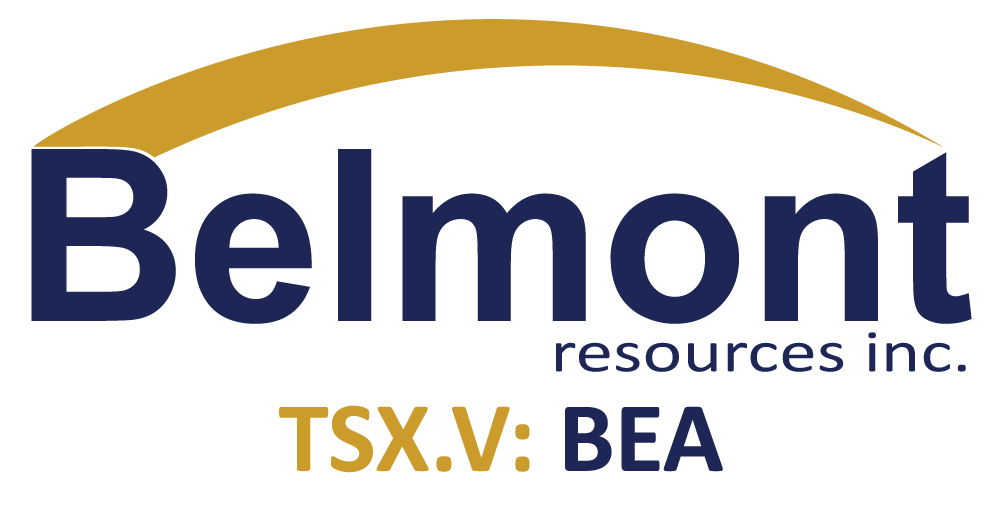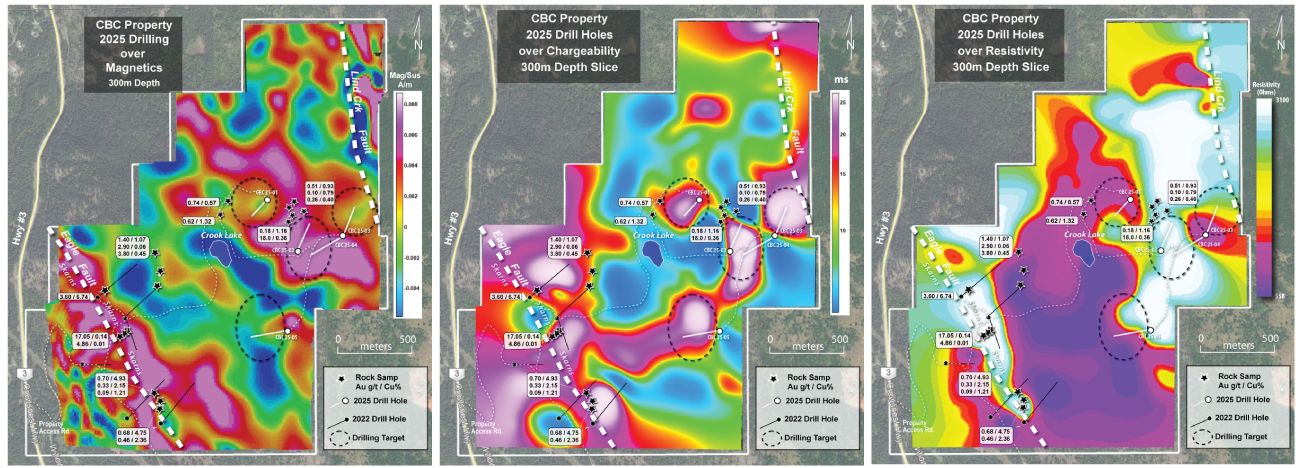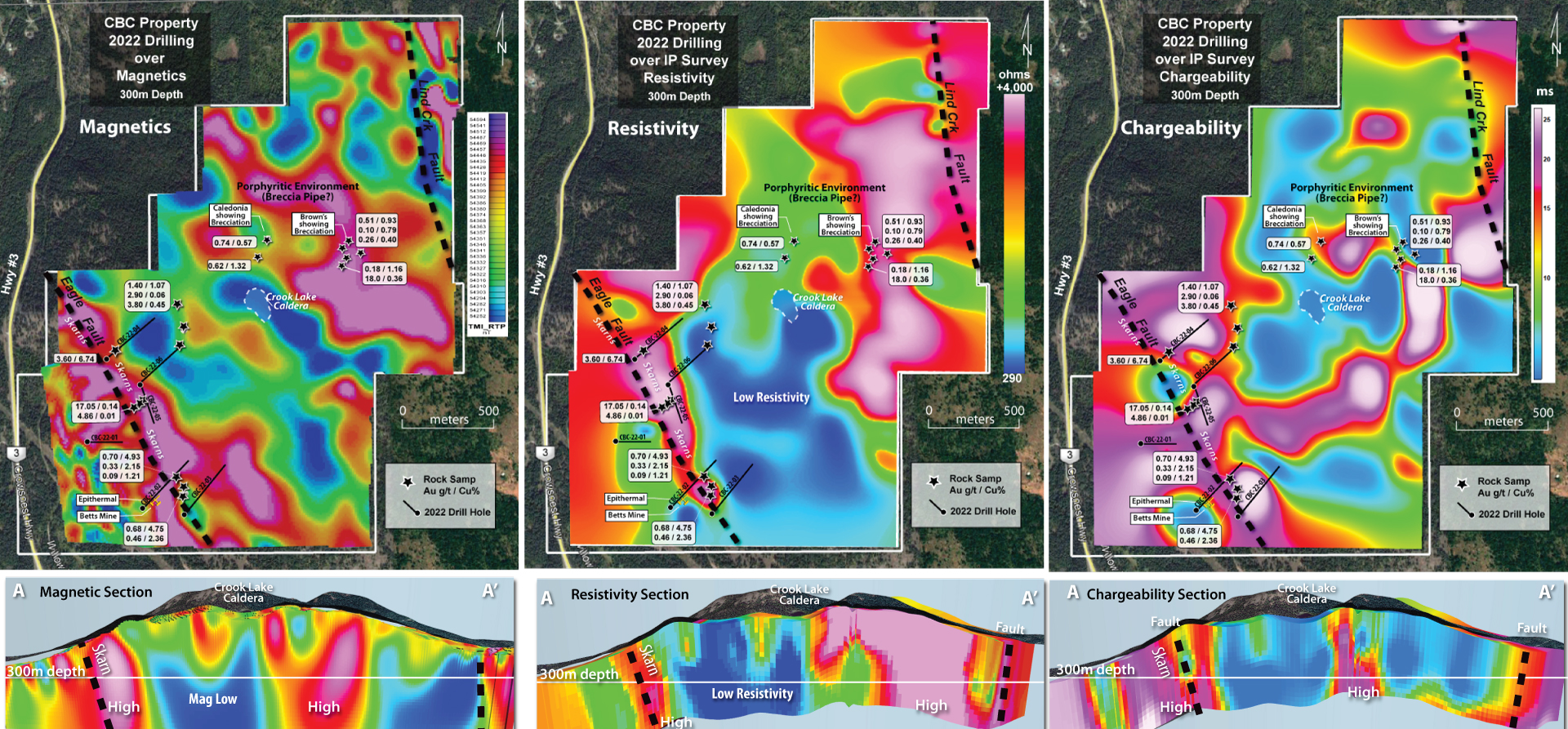Come By Chance Property: A Compelling Porphyry-CRD System
2,000 meter drilling program recently completed with results pending.
The Come By Chance (CBC) property displays all the hallmarks of a significant porphyry copper-gold system with exciting CRD (Carbonate Replacement Deposit) potential, representing a prime exploration opportunity in southern British Columbia’s prolific Quesnel Terrane.
2025 Drilling Campaign Overview
The 2025 program was designed to follow up on promising 2022 results and geophysical data that vector toward a possible mineralized center at depth. Four key target areas were selected based on integrated geological and geophysical modeling, with one diamond drill hole testing each target.
Belmont’s geological team have completed logging and processing core samples. Assay samples were shipped to MSALABS in Langley, B.C. Results are expected within approximately eight weeks.
CBC 2022 Phase I Drill Program
2022 Drill Holes Over Geophysics
CBC 2022 Phase I Drill Program – Summary
The 2022 Phase I diamond drill program at the Come By Chance (CBC) Property successfully identified evidence for a potential mineralized porphyry system.
- Program Details:
• 6 diamond drill holes totaling 2,304 metres
• Focused on magnetic, chargeability, and resistivity anomalies in the south-west region of the property - Key Findings:
• Core revealed multiple mineralization and alteration styles, consistent with a relatively cool hydrothermal regime— suggesting proximity to a nearby heat source with potential porphyry-style mineralization.
• Mineralization: Dominated by pyrite and pyrrhotite, with lesser chalcopyrite, and rare molybdenite and galena. - Vectoring Results
• CBC-22-01, 02, 03 & 05: Propylitic alteration with localized skarn alteration, typical of zones distal to a porphyry heat source.
• CBC-22-04 & 06: Increased pyrite-pyrrhotite mineralization, quartz-sericite/clay alteration, and elevated molybdenum—indicating a slight increase in hydrothermal fluid temperature and transition toward weak phyllic alteration. - Exploration Significance:
• Results support the presence of a large hydrothermal system with porphyry potential.
• The program has narrowed the search vector toward more prospective targets for follow-up drilling.
Dual-System Evidence
CBC property demonstrates compelling geological characteristics supporting both Porphyry & CRD (Carbonate Replacement Deposit) models:
Porphyry Indicators:
- 2022 drilling confirmed widespread porphyry-style alteration, veining, and mineralization.
- Strong propylitic alteration halos present in all 2022 drill holes — a classic porphyry signature.
- Up to 20% pyrite mineralization observed, potentially forming halos around a concealed porphyry core.
- Geophysical surveys reveal zonation patterns consistent with a porphyry center.
CRD-Skarn Potential:
- Limestone units of the Brooklyn Formation provide ideal host rocks for CRD-style mineralization.
- Monzonite and syenite intrusions represent potential sources of metal-rich hydrothermal fluids.
- Major structural corridors (Eagle and Lind Creek Faults) likely acted as fluid conduits.
- High-grade surface samples include values up to 17.05 g/t Au and 6.74% Cu.
- 2022 drilling identified skarn-style alteration consistent with CRD systems.
B.C. Porphyry Belt
Over 80% of the world’s copper production comes from large-scale open-pit porphyry copper mines.
In Canada, British Columbia enjoys the lion’s share of porphyry copper/ gold mineralization.
These deposits contain the largest resources of copper and 50% of the gold in the province.
The Prolific Greenwood Mining District
The prolific Greenwood mining camp of southern British Columbia is considered to be one of the most concentrated mineralized areas in western North America with over 30 past producing mines, each only scratching the surface.
B.C. Porphyry Belt
High-gold and copper values at surface are indication of rising hydrothermal fluids via structures/fractures from a concealed mineral-bearing intrusive.
Crook Lake Caldera is an indicated collapsed breccia, an ideal location for the deposition of circulating mineral-bearing hydrothermal fluids.





